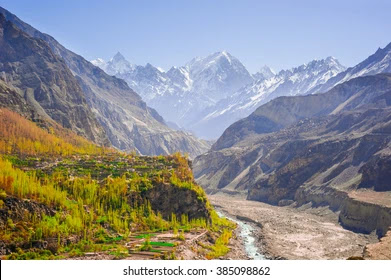Introduction (Geography):
Nestled in the heart of Pakistan's Punjab province, Multan stands as a city steeped in history and culture. Known as the "City of Saints" and the "Mango Capital of the World," Multan boasts a rich heritage that dates back thousands of years. Situated on the banks of the Chenab River, this ancient city holds a significant place in the country's cultural landscape. As I embarked on my journey to Multan, I was eager to immerse myself in its vibrant tapestry of traditions and explore its numerous treasures.
Multan Fort:My first stop was the iconic Multan Fort, a magnificent structure that has withstood the test of time. Built during the reign of the Delhi Sultanate, this fortress showcases a seamless blend of architectural styles, reflecting the city's historical influences. The intricate carvings, grand gateways, and impressive bastions within the fort left me in awe of Multan's rich past.
Shah Rukn-e-Alam Shrine:
Next on my list was the revered Shah Rukn-e-Alam Shrine, a spiritual haven for devotees. Housing the tomb of the Sufi saint Shah Rukn-e-Alam, this mausoleum exudes an aura of tranquility. The intricate blue tile work and the towering dome create a captivating sight, while the spiritual ambiance fills the air with a sense of reverence.
Baha-ud-Din Zakariya University:
Multan is not only known for its historical landmarks but also for its educational institutions. Baha-ud-Din Zakariya University, named after the renowned Sufi saint, is one such institution. The sprawling campus and impressive architecture symbolize the city's commitment to nurturing knowledge and promoting intellectual growth.
Ghanta Ghar:
A visit to Multan is incomplete without exploring Ghanta Ghar, the iconic clock tower that stands tall in the heart of the city. This architectural marvel not only serves as a timekeeper but also serves as a popular meeting point for locals and visitors alike. The vibrant surroundings and bustling markets make it a vibrant hub of activity.
Multan Museum:
For history enthusiasts like me, a visit to the Multan Museum is a must. Housing a vast collection of artifacts, including ancient coins, pottery, and historical relics, the museum offers a fascinating glimpse into the city's past. Exploring the galleries and learning about Multan's rich archaeological heritage was a captivating experience.
Hussain Agahi Bazaar:
Immersing myself in the local culture, I made my way to Hussain Agahi Bazaar, a bustling market brimming with color and energy. From handicrafts to traditional clothing and aromatic spices, the bazaar offered a sensory delight. Engaging in friendly banter with the shopkeepers and indulging in delectable street food added to the charm of the experience.
Tomb of Shah Shams Tabrez:
The Tomb of Shah Shams Tabrez beckoned me with its spiritual aura. Dedicated to the revered Sufi saint, this mausoleum is a place of pilgrimage for devotees seeking solace and blessings. The tranquil atmosphere and the mesmerizing architecture left me with a sense of peace and serenity.
Multan Cricket Stadium:
As a sports enthusiast, I couldn't miss the chance to visit the Multan Cricket Stadium, known for its passionate cricketing culture. The vibrant atmosphere during matches and the enthusiastic cheers from the stands showcased the city's love for the sport. Being a part of the lively crowd, I felt a sense of camaraderie and shared excitement.
Tomb of Bahauddin Zakariya:
Another significant spiritual site in Multan is the Tomb of Bahauddin Zakariya, the revered Sufi saint and scholar. The intricate artwork adorning the tomb and the peaceful ambiance offered a sanctuary for introspection and spiritual contemplation.
Sohan Halwa:
No visit to Multan is complete without savoring its famous Sohan Halwa, a traditional sweet delicacy. I relished the melt-in-your-mouth texture and the rich flavors of this local specialty, indulging in a taste that is synonymous with the city's culinary heritage.
Conclusion:
My journey through Multan was a captivating exploration of the city's vibrant history, cultural landmarks, and warm hospitality. From the grandeur of the Multan Fort to the spiritual solace of the shrines and the bustling markets, Multan left an indelible impression on me. As I bid farewell to this cultural gem, I carried with me cherished memories of the city's fascinating heritage and the welcoming smiles of its people. Multan truly exemplifies the spirit of Pakistan, where tradition meets modernity in a tapestry of beauty and charm.
















